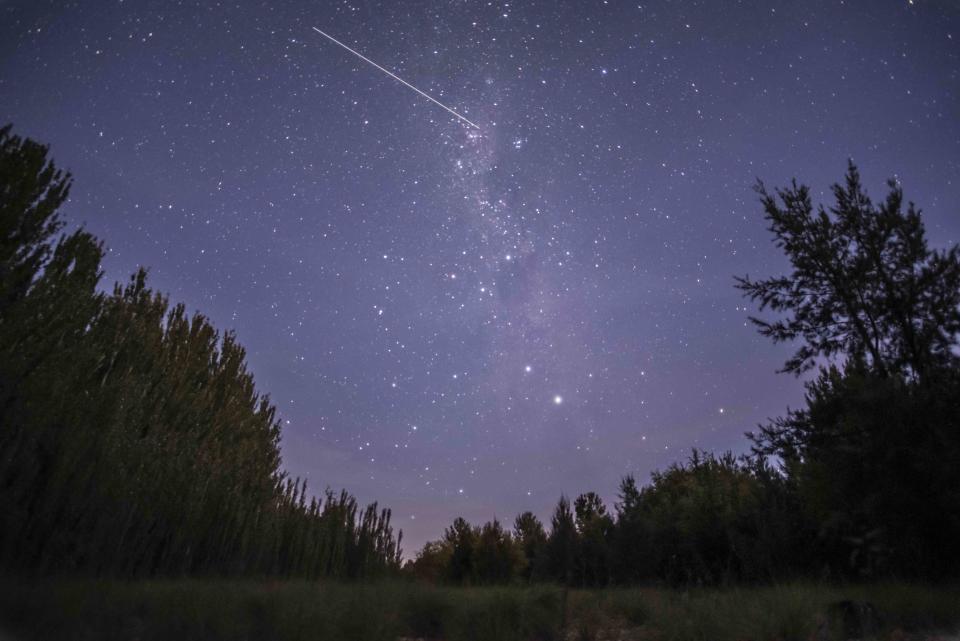The Draconid Meteor Shower Will Have Peak Viewing Conditions With Up to 10 Shooting Stars Per Hour — and It Starts Tonight
Here’s everything you need to know about catching the 2024 Draconid meteor shower.

Getty Images
This weekend’s astonishing solar activity was the opening act for another interstellar marvel: the Draconid meteor shower, which peaks late on Oct. 7 into Oct. 8.
The Draconids aren’t as celebrated as other meteor showers, like the Perseids, but this year’s event does align with a dim waxing crescent moon that sets around 9 p.m. local time. That means there’s no lunar light to wash out the show. And, if you watch from a dark-sky perch, you could catch up to 10 soaring meteors per hour.
Here’s everything you need to know about catching the 2024 Draconid meteor shower, including where to look in the night sky and how to improve your shooting-star odds.
What Makes the Draconid Meteor Shower Special?
The Draconids, a flurry of ice and rock debris from Comet 21P, are a meteor-shower rarity. They’re most visible in the early night instead of the wee hours of the morning, because the shower’s radiant is at its highest point in the sky right as dusk descends, according to EarthySky. (Typically, a meteor shower’s radiant is highest in the early morning.)
That means you don’t necessarily have to pull an all-nighter to catch the spectacle. The shower runs Oct. 6-10, and peaks around 11 p.m. ET on Oct. 7.
How to See the Draconid Meteor Shower This Week
From Oct. 7 through Oct. 8, look toward the constellation Draco, known as the dragon, in the north-northwest sky. The constellation hovers just above Ursa Major and Ursa Minor (the Big Dipper and Little Dipper, respectively). While it peaks late Oct. 7, you could still catch streaking meteors the night of Oct. 8.
Increase your Draconids luck by stargazing from a locale with low light pollution, such as a dark-sky park or stargazing hotel. Opt for a vantage point with minimal obstructions overhead; i.e., a wide-open field or lakefront with open north views instead of a thick forest. And, while you won’t need telescopes or binoculars to catch the show, a red-light headlamp or flashlight can do wonders for preserving your night vision.
For more Travel & Leisure news, make sure to sign up for our newsletter!
Read the original article on Travel & Leisure.


